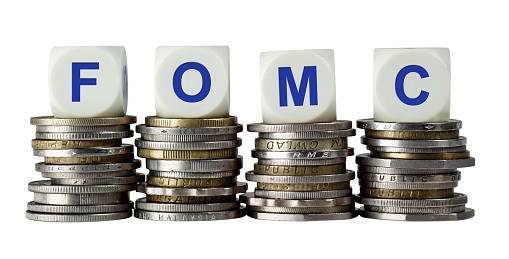Last night’s Fed meeting turned out to be a bit of a non-event in the end, at least as far as financial market is concerned, as suggested by the lack of volatility. As expected, no major changes were made to the Fed key monetary policy tools, with the federal funds rate held at 0.0-0.25% and the pace of QE buying left at $120B per month ($80B in US treasuries and $40B in mortgage-backed securities or MBS). Two notable changes were made to the FOMC’s new statement on monetary policy, however; the first was the addition of a line stating that the economy had made progress towards its dual mandate goals, although the Fed did not say that “substantial” progress towards these goals had yet been met, which is the condition the bank has said is required for it to begin tapering its asset purchase programme. Meanwhile, the bank’s view on the sectors worst affected by the pandemic was upgraded to having “shown improvement but have not fully recovered” from “remain weak” (in the last statement). So the statement has become incrementally more hawkish to reflect continued progress in the US economic recovery, but this seems to have been in line with market expectations – most market participants expect the Fed to announce later in the year that it will begin asset purchases tapering at the start of next year.
In terms of Powell’s remarks in the press conference; he stuck to his usual line about the Fed thinking that the current spike in inflation is going to be transitory. On the labour market, he said that there is still “ways to go” for the labour market to recover fully (as expected, given employment levels in the US right now are still about 6M below where they were before the start of the pandemic). He said there is still “some ground to cover” for “substantial” progress having been met towards the Fed’s employment goal (again, this is the condition the Fed wants to see to start tapering its asset purchase programme). The jobs reports in the months ahead will be crucial in determining the timing of the taper; if for whatever reason the labour market recovery doesn’t go as well as hoped, this could delay the Fed’s taper decision, which would of course have dovish implications. The Fed seems confident that this will not happen, however, and played down the risks to the US economy of the current rising wave of Covid-19 delta variant infections given the country’s high vaccination rate. Powell gave a few hints about his preference for the Fed’s sequencing of monetary policy tightening steps; he said it was likely that, when winding down QE purchases, treasury buying, and MBS buying would be reduced at an even pace and said that ideally the Fed would not raise rates prior to its QE taper having concluded. If the latter remains the Fed stance, the rate at which the bank opts to wind down its QE programme could thus be crucial in informing when the first-rate hike is coming.
Back to the market reaction; as noted, none of the new information from the Fed was particularly ground-breaking or unexpected (the Fed is gradually adopting a more hawkish position in line with the improving economy) and, as far as markets are concerned, there wasn’t much to trade off of. US equity bourses continued to trade within recent ranges and US index futures are this morning somewhat mixed, but for the most part not too far from record highs. Modest underperformance is being seen in Nasdaq 100 futures after poor Facebook earnings last night. In terms of US bond markets, nominal yields aren’t much changed from pre-FOMC levels, with 10-year yields have risen very modestly to just above the 1.25% mark. Real yields continue to gradually head lower, however, and push to fresh record lows. 10-year TIPS yields currently trade under -1.16%, having reversed a kneejerk spike to nearly as high as -0.9% in wake of yesterday evening’s Fed event. The larger drop in real yields versus nominal yields continues to push US inflation expectations up, with 10-year break-evens now comfortably back above 2.4%.
Though there weren’t really any dovish vibes from last night’s FOMC meeting, the US dollar has come under pressure and the DXY briefly slipped to one-month lows under the 92.00 handle this morning. It appears that, with the FOMC out of the way with no major surprises, the USD has been given the green light by market participants to play catch up to the recent fall in US real yields to record lows. Note, in recent sessions, US real yields had been dropping, which is normally bearish for the dollar, but the dollar had been holding up, perhaps amid nerves that the FOMC might be more hawkish that expected and anyone selling USD due to falling real yields might be caught offside. As long as real yields remain at these subdued levels, the opportunity cost of holding USDs will remain high, undermining its investment appeal. Also weighing on the dollar has been a further improvement in risk appetite in key international markets, which has been weighing on the dollar’s safe haven demand; Chinese stocks were supported overnight amid reports that Chinese regulators had met with banks to ease concerns about the recent crackdown on sectors like tech, education and overseas listings that had been weighing on stock prices there recently. The continued recovery in China-related sentiment has seen CNH surge for a second; USDCNH is back in the 6.46s having been as nearly as high as 6.53 on Tuesday. Meanwhile, strong earnings in Europe have helped to propel major bourses there higher and the Stoxx 600 (+0.4%) has hit fresh record highs about 462. All of this is hurting the dollar but remember also that a few banks have been calling for month-end selling in the USD, another factor which might be exacerbating recent moves.
Turning to commodity markets; crude oil prices are a up about 0.5% this morning, with WTI moving into the upper $72.00s and Brent moving back above $74.00, aided by a combination of the improved risk appetite in global markets and confirmation from the official US EIA report that crude oil inventories continued to fall in the week just gone, despite the recent rise in Covid-19 infections in the country. Analysts are becoming more confident that further Covid-19 waves in highly vaccinated developed countries will not deliver any meaningful hits to oil demand. Meanwhile, news flow suggests that the US and Iran remain at loggerheads with regards to negotiations to return to the JCPOA. Dollar weakness is also helping US crude oil prices, just as it is helping most industrial metal prices such as copper, lead and aluminium. Precious metals, meanwhile, are having a strong session with spot gold up over 1.0% and spot silver up over 2.0%. That means spot gold prices have now managed to move back into the mid-$1820s. Precious metals had failed to benefit as much as would typically be expected amid the drop in US (and global) real yields in recent weeks to fresh record lows, mainly due to the persistent bid underpinning USD heading into yesterday’s FOMC meeting. As USD falls in wake of the meeting, expect precious metals to continue to derive support.
Back to FX, the US dollar is the weakest currency in the G10 this morning and fellow safe-havens JPY and CHF are also laggards. USDJPY remains subdued just under 110.00, but USDCHF has managed to push to fresh more than six-week lows under 0.9100, though downside has subsided since the pair ran into support in the form of its 200DMA at 0.9076. Conversely, risk-sensitive NZD, CAD and NOK are the best performers, with the former unfazed by the release of underwhelming New Zealand NBNZ survey data overnight. Fellow risk-sensitive AUD has been less able to make the most of the improvement in risk appetite or indeed the gains in metal prices (like copper and gold) that it is also sensitive too, perhaps given growing calls over night from a number of local banks for the RBA to adopt a dovish turn at its next policy meeting. Most analysts now expect the bank to increase the pace of its monthly asset purchase programme to provide additional stimulus to the economy that is currently suffering from lockdown and is now very likely to post a Q/Q contraction in Q3 of this year. Thus, while the RBNZ, BoC and Norges Bank all look to be on course to be amongst the earliest monetary policy tighteners in the G10, its appears that the RBA is set to fall further and further behind, which could well weigh further on AUD relative to NZD, CAD and NOK. Elsewhere, EUR and GBP are both stronger as a function of the weaker US dollar, with the former not paying too much attention to Eurozone data out today which for the most part has been decent; the latest German jobs report for the month of July was a little better than expected, the Eurozone Business and Consumer survey saw sentiment hit record highs and the preliminary estimate of headline inflation rates in both Spain and Germany came in above expected in July (this shouldn’t worry the ECB much, given they, like the Fed, see the spike as transitory).
The Day Ahead
The first estimate of US Q2 GDP growth numbers out at 1330BST are the key event today and are expected to show the US economy expanding at an annualised pace of 8.5% in the second quarter. Weekly initial jobless claims numbers will also be released, and the hope will be that claims resume their recent downwards trajectory back towards pre-pandemic levels. US Pending Home Sales for the month of June will then be out at 1500BST but won’t move markets.




